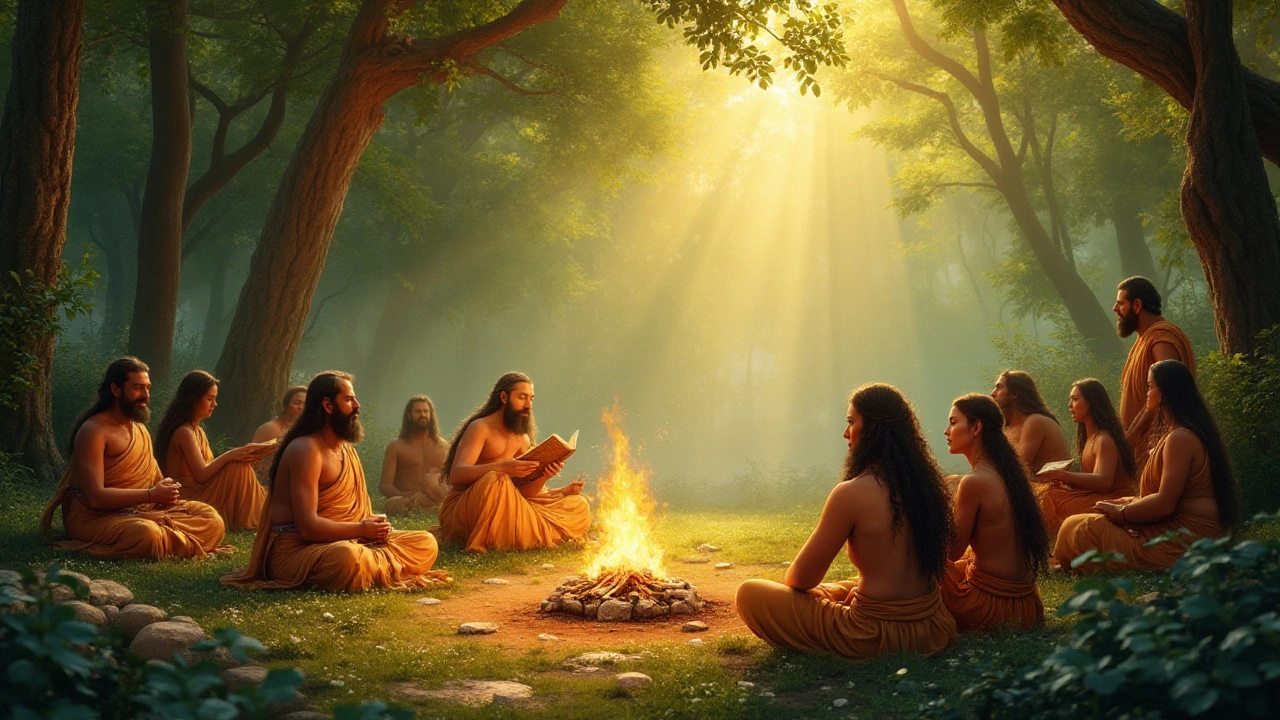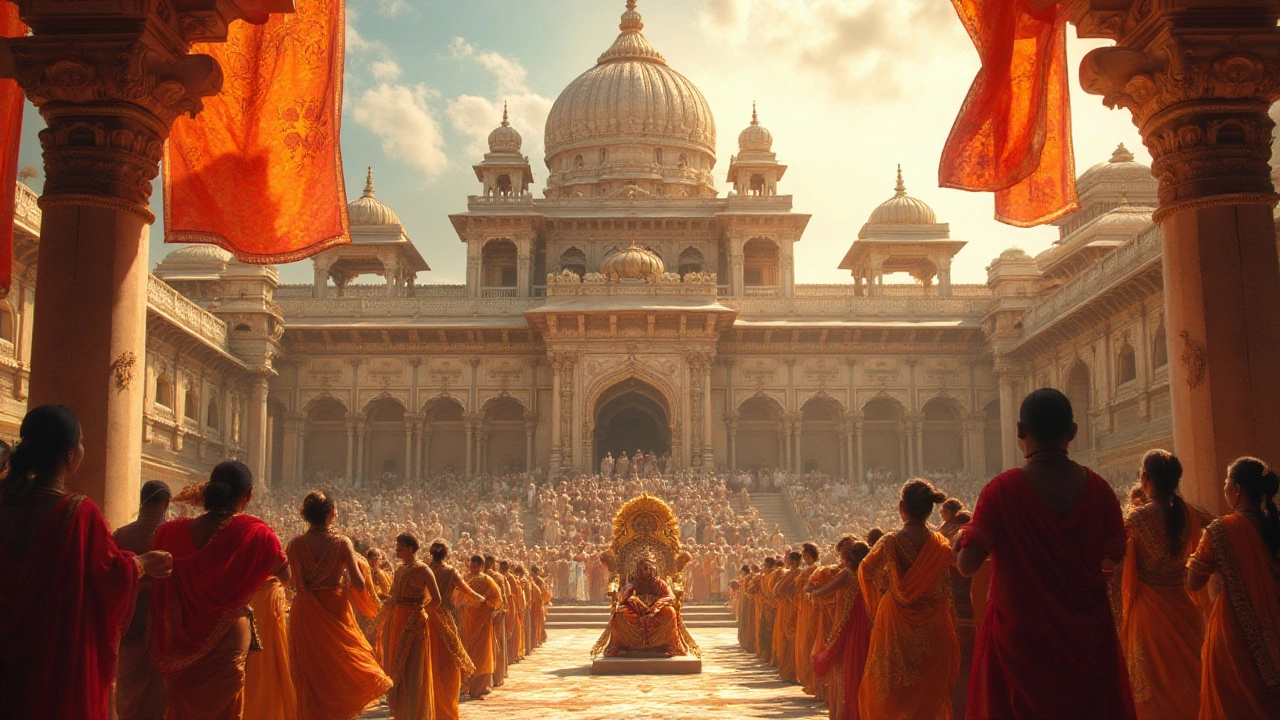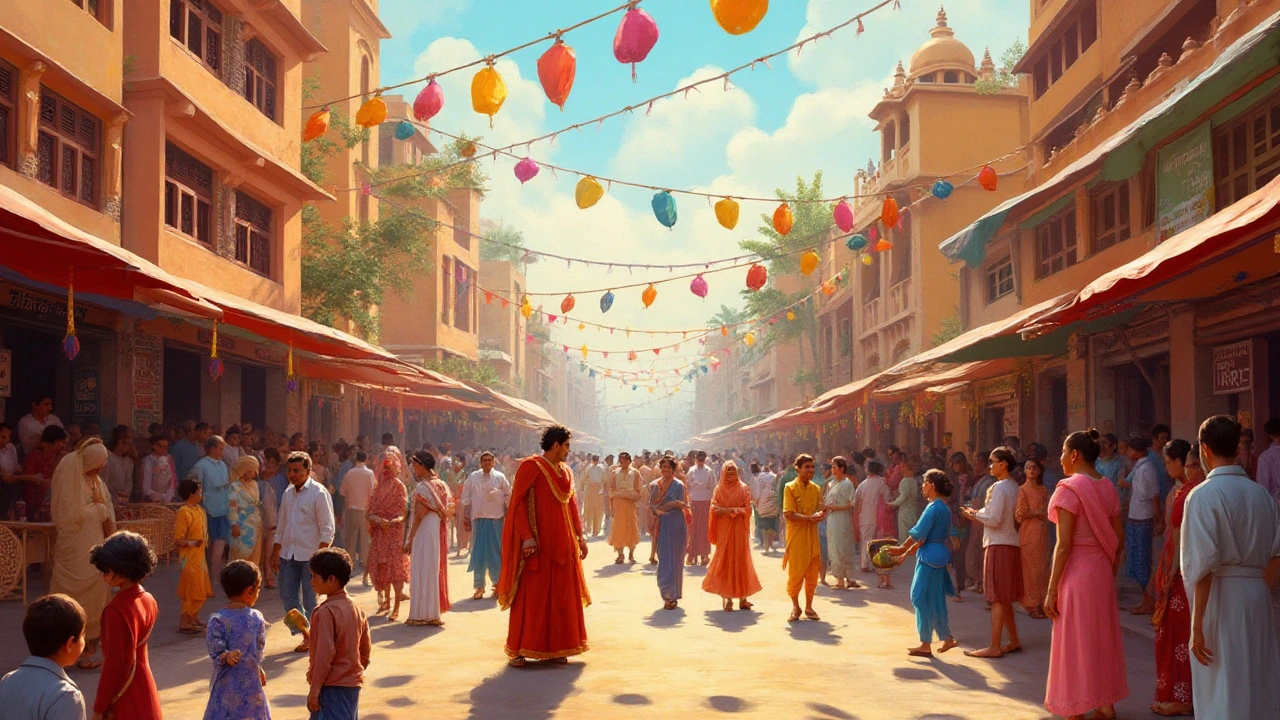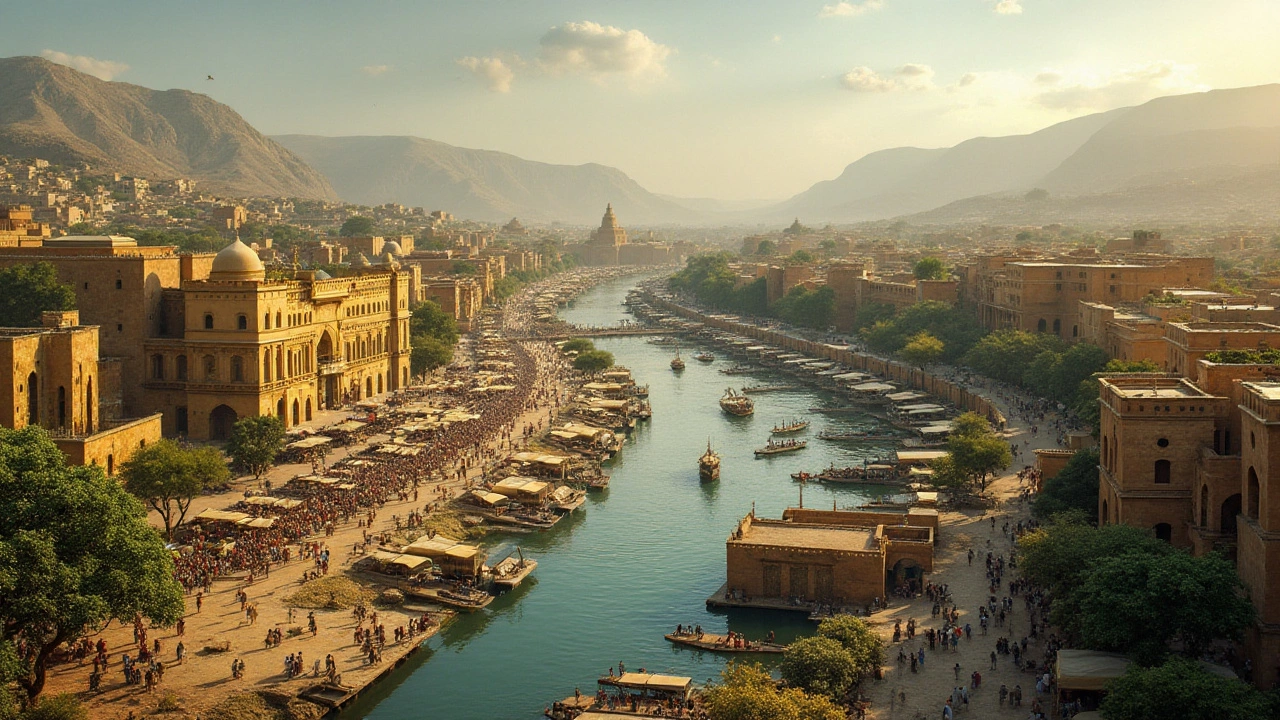Delving into the origins of Indian heritage is akin to embarking on a journey through time, where every era unfolds ancient stories and remarkable cultural milestones. India’s cultural heritage is not just a matter of lineage but a living, breathing entity that continues to evolve while staying true to its roots.
From the ancient settlements of the Indus Valley Civilization to the complex tapestry of traditions that shape the current cultural landscape, understanding where Indian heritage began provides insight into the society’s enduring values and beliefs. This exploration is a celebration of diversity, resilience, and creativity that have characterized Indian culture for millennia.
- The Dawn of Indian Civilization
- Influences of Ancient Empires
- Cultural Fusion Through the Ages
- Modern Preservation of Tradition
The Dawn of Indian Civilization
When we talk about the beginnings of Indian heritage, the mind naturally wanders back to the enigmatic Indus Valley Civilization, which flourished around 3300 BCE in the northwest part of the Indian subcontinent. This civilization, notable for its advanced urban planning and architecture, gives us one of the first glimpses into the sophisticated cultural roots that define India. Intriguingly, the cities of Harappa and Mohenjo-Daro, with their striking brick structures, demonstrate an early emphasis on urban organization and public sanitation, a testament to the innovative spirit of this ancient society.
Another significant contributor to the early heritage of India is the Vedic Period, commencing around 1500 BCE. The Vedic texts, long considered sacred literature, laid the foundational elements for many traditions and customs that persist today. The texts provided not only spiritual guidance but also insights into everyday life. Ritual practices, social structures, and the earliest forms of language found their expressions in these hymns and scriptures, deeply influencing later Indian philosophies and religious practices.
During this formative time, interaction and trade with neighboring regions also played a crucial role in shaping early Indian traditions. The exchange of goods such as precious stones, textiles, and spices facilitated not only economic but also cultural exchanges that enriched the subcontinent's diverse tapestry. Such interactions acted as conduits for ideas and beliefs, integrating myriad influences into the growing cultural framework of India.
The Role of Linguistic Evolution
Language has always been a crucial carrier of culture, and the evolution of languages such as Sanskrit during the Vedic era significantly impacted the heritage of the region. Sanskrit not only served as a liturgical language but also a medium for artistic and philosophical discussions. As this linguistic tradition developed, it provided a common thread linking ancient India with its diverse cultural narratives, harmonizing the diverse ethos of the land.
In unraveling the dawn of Indian civilization, one cannot overlook the importance of myths, legends, and oral traditions that have been passed down across generations. These stories are not mere tales; they are reflections of the values and aspirations of ancient societies. Many of these narratives have found their way into classical epics, such as the Mahabharata and the Ramayana, offering timeless wisdom and succor.
"The dictionaries are but the vehicles of eloquence, the lamps of knowledge, the spies in old fortresses, and the guides of the wise," states a Sanskrit scholar about the role of language in shaping society.
Today, as we admire the vestiges of ancient times, from the grand structures to the sacred texts, the dawn of Indian civilization continues to enlighten and inspire us. This era set the stage for the vibrant, multifaceted heritage that India proudly preserves and celebrates in myriad ways. Understanding these early developments provides modern society with a deeper appreciation for the resilience and adaptability that have allowed Indian culture to transcend time and space.

Influences of Ancient Empires
The rise and fall of great empires have significantly sculpted the intricate patterns of Indian heritage, infusing it with a legacy that transcends time. Starting with the Mauryan Empire, founded by Chandragupta Maurya around 321 BCE, India saw the emergence of one of its first major dynasties. The Mauryan era was marked by its vast geographic expanse, stretching from the northern regions of modern-day Afghanistan to the heart of South India. Ashoka the Great, arguably the most celebrated Mauryan king, embraced Buddhism and propagated the principles of peace and tolerance widely, leaving behind numerous rock and pillar edicts as his historical legacy. These edicts spread not only across the Indian peninsula but also reached distant lands, promoting the spirit of coexistence and compassion.
As the Mauryan Empire waned, the Gupta Dynasty arose, heralded as the Golden Age of India. This period, which began in the 4th century CE, witnessed unparalleled advancements in literature, science, and the arts. The Guptas were pivotal in fostering a cultural renaissance that emphasized education, as seen in the renowned universities of Nalanda and Takshashila. It is this era that gifted the world the concept of zero, an immense contribution from Indian mathematicians. Indian philosophy, Sanskrit literature, and intellectual pursuits flourished under the patronage of these ancient rulers. The intellectual ferment of this time left an indelible imprint on Indian culture, influencing subjects as diverse as astronomy and political theory.
The Gupta’s eventual decline gave way to the arrival of foreign influences, introducing new dimensions to India's cultural tapestry. The Delhi Sultanate, established in the 13th century, exemplifies how external dynasties intermingled their own traditions with Indian customs. Islamic architecture, notable for its beauty and symmetry, left a lasting architectural legacy. The intricacies of Indo-Islamic art, especially seen in monuments like the Qutub Minar, reflect the synthesis of styles that the Sultanate period encouraged. Beyond architecture, these centuries were significant for cultural exchanges that transformed trading practices, culinary tastes, and social rituals across the subcontinent.
Equally transformative was the Mughal Empire, which rose to prominence in the 16th century. The Mughals elevated Indian heritage to new heights, flourishing a distinctly Indo-Persian culture. Akbar, Jahangir, Shah Jahan—all emperors known for their visionary approaches—facilitated this blend of indigenous and Mughal traditions. Paintings, music, poetry, and splendid architectural monuments such as the Taj Mahal are resplendent testimonies to this era of cultural synthesis. The Persian influence is unmistakable, yet what stands out is the Mughal endeavors to weave it intricately into India's existing cultural fabric. As Bernier, the French traveler and chronicler of the Mughal era noted, "The grandeur of Hindu temples mingled with the Persian splendor brings forth the most magnificent visions my eyes have ever seen."
In conclusion, the influences of these ancient empires laid the groundwork for what would become a complex and layered cultural heritage. With each dynasty bringing its unique flair, India’s composite culture blossomed, reflecting an enduring legacy of resilience and adaptation. This history of cultural amalgamation not only highlights India's dynamic adaptability to change but also celebrates its deep-rooted respect for diverse traditions, ensuring its cultural vitality endures to this day.

Cultural Fusion Through the Ages
India, a country famed for its vibrant customs and age-old practices, has been a meeting ground of cultures for centuries, if not millennia. The concept of fusion is deeply embedded in its ethos, serving as a testament to its openness and adaptability. The waves of cultural influences that swept through India left indelible marks, each wave respecting and contributing to the existing cultural milieu. This fusion is not just a by-product of historical events but a deliberate intertwining of diverse beliefs, ideas, and practices.
One can trace this intricate dance of cultural fusion back to when ancient trade routes crisscrossed through Indian subcontinents. Traders from distant lands like Greece, Persia, and Arabia didn't just come bearing spice, textiles, or jewels, they brought with them glimpses of their rich traditions and philosophies. The fusion of Greek art with Indian themes led to the rise of Gandhara Art, a testament to this cultural exchange. This was a school of art where chiseled figures bore the toga style attire reminiscent of Greek aesthetics yet carried the spiritual essence of Indian Buddhism.
Religious and philosophical interactions also played a crucial role in shaping India's cultural landscape. When Buddhism spread under the patronage of emperors like Ashoka, it traveled to regions like Tibet, Southeast Asia, and beyond. While the philosophy retained its core, it absorbed local practices and customs, leading to a rich tapestry of traditions bound together by the universal principles of compassion and mindfulness. This was mirrored in India when ideas from Buddhism, Jainism, and other philosophical schools influenced Hinduism, leading to new schools of thought, art forms, and celebrations.
During the medieval period, India became a flourishing hub where the confluence of ideas reached its zenith. The advent of Islamic influence through the Delhi Sultanate and the Mughal Empire introduced new dimensions of art, music, and architecture. The domes and minarets of mosques, the intricate floral and geometric patterns in Mughal miniatures, they all echo this harmonious blend of Indian and Persian motifs.
Mughal Emperor Akbar once said, "The pursuit of reason and the path of tolerance lead to prosperity." This philosophy not only cemented his empire's strength but also encouraged an unprecedented cultural symbiosis.
The culinary arts perhaps best illustrate cultural fusion. Each region of India boasts a distinct flavor palette shaped by the intermingling of its indigenous spices with foreign influences. The Indian rogan josh, for instance, highlights Persian expertise in meat preparation, while biryani is a fragrant testimony to the rich culinary traditions of central Asia married with Indian rice and spices. This blend permeates everyday life, showcasing how cultural traditions from various civilizations seamlessly wove into Indian daily rituals and festivities.
Modern India continues its journey as a crucible of cultures, drawing from its rich historical interactions to navigate contemporary cultural fusions. As globalization reaches its apex, India absorbs ideas from around the world while offering its unique cultural heritage. This blend resonates in modern Indian cinema, music, and literature, where traditional themes are reimagined through modern lenses, leading to innovative and engaging cultural expressions.

Modern Preservation of Tradition
In today's rapidly changing world, the preservation of Indian heritage has become a crucial endeavor. This isn't merely about holding onto the past but integrating these timeless traditions into present-day life. Efforts to preserve these cultural elements are ongoing and multifaceted, involving individual initiatives, governmental support, and global appreciation. From the bustling cities to the serene villages, there's a palpable sense of stewardship over traditional arts, dances, festivals, crafts, and languages.
Institutions like the Indian National Trust for Art and Cultural Heritage (INTACH) are relentless in their mission to safeguard historical monuments and promote traditional crafts. The vibrant tapestry of Indian heritage, with its vast array of handmade crafts, is supported through initiatives that encourage artisans to continue practicing time-honored skills. This ensures that skills passed down through generations remain alive and thriving.
The influence of Indian traditions on modern architecture is another fascinating aspect. Contemporary Indian architects often incorporate traditional styles into their designs, creating spaces that resonate with cultural depth while embracing modern aesthetics. This blending not only celebrates India's rich past but also presents a unique architectural identity to the global community.
Technology plays a significant role in preserving and promoting heritage. Digital platforms have opened avenues for cultural education and global exposure. Online exhibitions, virtual tours, and digital libraries provide accessibility to Indian art and culture, ensuring that traditional values are passed on to younger generations. This digital renaissance is not just about preservation but also about witnessing a global audience engage with Indian heritage like never before.
Language preservation is another focal point. Linguistic societies and cultural groups tirelessly work to document and promote India's diverse languages and dialects. Several initiatives aim to teach young Indians these languages, ensuring they remain an integral part of everyday life. As UNESCO points out, "Language is the pivotal expression of culture and survival, with every language lost, a culture vanishes."
"Preserving our heritage is not about remaining in the past, but projecting the beauty of the past into the future," stated Suresh Goel, former Director General of the Indian Council for Cultural Relations.
Governments and private entities also organize numerous festivals and cultural events across the globe, showcasing Indian heritage. These events attract people from various cultures and backgrounds, fostering a sense of cultural understanding and appreciation internationally. From Diwali celebrations in London to Holi festivals in New York, these gatherings are powerful expressions of cultural exchange.
The commitment to preserving cultural roots is evident across India and the world, bearing testimony to its undying significance. This effort to maintain, adapt, and celebrate ancient traditions in modern life ensures that Indian heritage continues to be a source of identity, pride, and inspiration for generations to come. Preserving India's cultural heritage is not just a duty but an ongoing celebration of what it means to connect the past with the future.
